We’re supposed to live in a representative democracy, wherein we elect officials to make policy and act on our behalf. But every 10 years, the ruling political leaders act on their own behalf when they draw new boundaries for districts. This topic might seem dull, but it can affect whether and how you receive government services, how much you pay in taxes, the response you see to crime and the COVID-19 pandemics, schooling and every other public policy matter. It plays a strong role in whether we will have competitive choices when we vote for the next 10 years.
So, now that remapping is wrapping up in Illinois, reviewing what happened with state House and Senate districts should be instructive.
Hearings began in mid-March and there were more than 50 of them, but little was done by government officials to publicize them to people other than government nerds. The overwhelming majority of hearings were held when most people in Illinois were at work or school. Actual drafts of proposed maps weren’t released until the legislative session was nearing its end, and the final versions were quickly rushed through and approved in a matter of hours on party-line votes.
Districts are required to be redrawn after each census to reflect population shifts, but that first set of maps wasn’t crafted using census population information because it was late. People from community groups pleaded with lawmakers to seek court permission to wait for the Census data as other states’ lawmakers did, but they were ignored. Lawmakers plowed ahead and drew maps so as not to risk sharing power with the minority party or the people of Illinois.
Those maps recently were declared unconstitutional by a three-judge federal panel. In its ruling, that judicial panel noted the litany of complaints about the lack of open, meaningful dialogue about district drawing. Lawmakers knew their maps built on population estimates wouldn’t hold up, so they approved a second set of maps in late August using actual population data. The version 2.0 maps were sped through the legislative process by new House Speaker Chris Welch and fairly new Senate President Don Harmon in six days, with even less meaningful public engagement.
First-term Gov. J.B. Pritzker, who repeatedly had campaigned on a promise to reject partisan maps, quickly signed the state House and Senate maps into law, claiming they reflected Illinois’ diverse population.
And yet, these maps are the subject of lawsuits by the Mexican American Legal Defense and Educational Fund, the NAACP of East St. Louis, the Illinois State Conference of the NAACP and the United Congress of Community and Religious Organizations, as well as the Illinois Republican Party.
These groups recently filed with the federal court panel proposed map revisions, along with their arguments suggesting the Illinois Democrats have violated the voting rights of Black and Latino Illinoisans by packing and cracking them into districts to dilute their voices and choices.
The NAACP and UCCRO groups altered boundaries of three House districts in and around East St. Louis to keep Black communities of interest compact and give them the ability to influence the outcome of an election.
MALDEF noted the Illinois Latino population grew by almost 310,000 people during the last decade, but Democrats created one fewer district each in the Illinois House and Senate where citizen voting-age Latinos comprise a population majority. There are eight Latino majority districts now, but the new maps contain only six such districts.
The GOP plaintiffs offered revisions that could boost the number of Latino majority House districts to 11 from four and the number of such Senate districts from to five from two. They drew a map with a Black majority in East St. Louis and created a Latino plurality district in Aurora.
MALDEF’s proposed revisions focus on Latino districts in Chicago and create nine House districts with majority Latino citizen voting-age populations on the North and South sides and four such Senate districts.
After lawmakers ignored their constituents this year, let’s hope the court will re-enfranchise communities of color, though that still won’t fix lawmakers working in the shadows to serve themselves instead of the people.
The MALDEF brief refers to staff depositions to highlight the secrecy surrounding the drawing of our election districts, noting, “The map-drawing process occurred behind closed doors in a room that was electronically locked and accessible only with keycards held by a select few redistricting staff members and elected officials.”
Representative democracy? Nope. You’ve been locked out so your votes are locked in, right where the ruling party wants them.
Crain’s contributor Madeleine Doubek is executive director of Change Illinois, a nonpartisan nonprofit that advocates for ethical and efficient government.
This article originally appeared on Crain’s Chicago Business.
